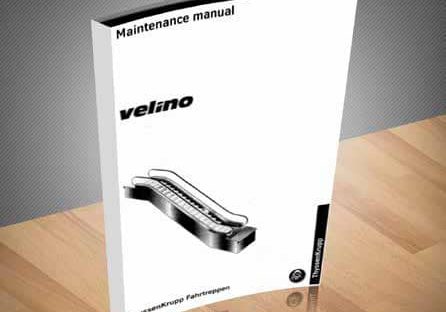Keeping People Moving in India
Dec 1, 2016

Indian Railways is modernizing rail stations with vertical-transportation equipment, and manufacturers are reaping the rewards.
As India strives to serve its growing population with safe, reliable, efficient infrastructure, government-owned Indian Railways (IR) has embarked on an effort to equip as many of its stations as possible with vertical-transportation equipment. IR demands elevators and escalators that are heavy duty, safe, code compliant, fire resistant, cost effective and easy to maintain. That is quite a tall order, but both domestic and foreign companies are stepping up to the plate. They are winning significant work from IR, with Chinese companies edging out the competition due to the affordability of their products.
Major players in the market include Otis, Stone India Ltd. (the Indian subsidiary of LT Elevators of China), Canny Elevator (China), Johnson Lifts Ltd. (India) and Omega Elevators (India), among others.
In 2015, IR began an aggressive initiative to install elevators and escalators throughout its stations over the next five years. In the first phase, approximately 10 stations received scores of elevators and escalators, as well as moving walks. There is approximately US$1 million available for station upgrades, most of which will go toward vertical-transportation upgrades, according to a government spokesperson.
Contracts for 100 elevators have already been awarded for phase one, and vendors like Otis, Johnson and Canny, along with a few other Chinese brands, are already on the job, according to IR. In addition, zonal railways will be asked to install 200 more elevators and escalators, for which some orders will be issued over the next year. Stations to get upgrades will be prioritized according to the size of the population they serve, corresponding with metro cities, capital cities, and smaller tier-2 and -3 towns.
IR has a separate design division, Research, Design and Standards Organisation (RDSO), that issues technical requirements for elevators and escalators. Shree A.K. Maurya, RDSO director, says the biggest specifications driver is the need to accommodate senior and handicapped individuals. In line with this, RDSO has specified features like lower elevator buttons, Braille control panels and doors wide enough to accommodate wheelchairs, he said.
India’s increase in rail traffic is an issue, but not one that can be completely addressed by lifts and elevators. V. Jagannathan, executive director at Johnson Lifts, observes IR envisages its stations as state-of-the-art facilities boasting adequate vertical-transportation equipment to address the twin issues of accessibility and traffic flow. “The driving force behind adding this new equipment is the new wave of thinking — of trying to offer ‘smart facilities’ for commuters and customers,” Jagannathan states.
Besides features that make units easier for disabled passengers to use, Jagannathan says IR desires gearless and machine-room-less elevators with power-operated doors, built-in safeties and proximity sensors. The lifts must be suitable for heavy-duty use and have energy-efficient electrical motor drives. “We had specifications that all elevators must meet stringent safety requirements and international standards that include fire-safety requirements during unforeseen emergencies,” Jagannathan notes.
Maurya elaborates on fire safety, noting IR’s requirements are very high. “We designed equipment to ensure it is able to withstand fire for 2 hr., versus the 1 hr. required for equipment in buildings,” he states. “This is in addition to the basic requirement of conformance with international standards. Quality should in no way be compromised.”
In addition to being fire resistant, units must be built to withstand severe environmental conditions, such as India’s monsoon season, Jagannathan says, adding, “The complexity of these challenges increases with the very high service and design-life requirements of IR.”
New installations must not only be heavy duty, but also cost effective and easy to maintain. Chinese brands are stealing the show, because they meet international quality standards at competitive rates, Maurya observes.
User friendliness is the ultimate goal of equipment, Jagannathan states, adding:
“Elevators should be user friendly and safe even for riders with no previous experience. The units must be provided with adequate signage and announcement/communication features. This provides commuters comfort and confidence.”
In an effort to provide better understanding of IR’s requirements, RDSO published Specification for Elevators in Indian Railways. The following are salient features of the document:
- Elevators shall be designed to meet stringent requirements of IR.
- Elevators shall be made in accordance with the latest international standards.
- To help ensure quality and accuracy, several levels of tests and inspections are required before an elevator may be commissioned.
- Elevators must be upgradable, easy to maintain and capable of being monitored remotely.
Jagannathan says IR units are typically outfitted with:
- Landing indicators
- Auto-call buttons
- Arrival gongs
- Door proximity sensors
- Door safeties
- Alarms
- Intercoms for communication with station staff
Vertical-transportation companies serving IR have implemented the latest elevator-status monitoring and maintenance support services to provide maximum equipment availability.
India is clearly entering an interesting new era of quality vertical transportation in IR stations as an increasing number of rail stations come under this ambit. Over the next five years, the target is to reach 400-500 stations. Priority will be given to stations falling within the A1 category, which are typically in state capitals, followed by those in the A category, which are in larger metro cities and therefore already better equipped.
Get more of Elevator World. Sign up for our free e-newsletter.







